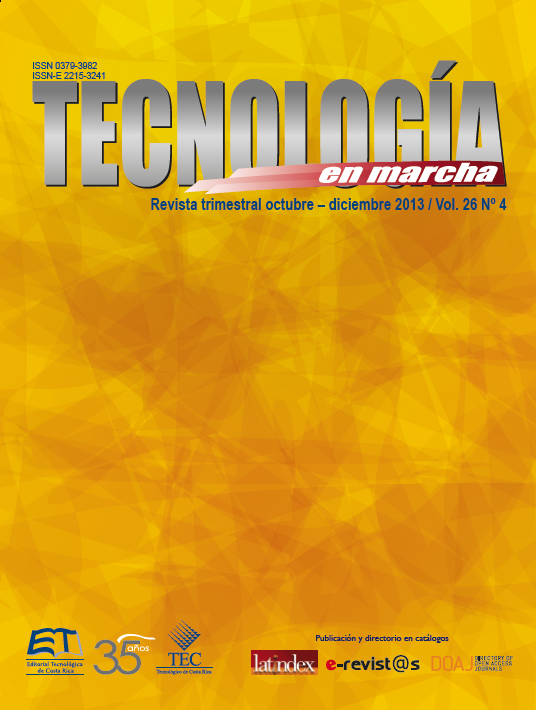In vitro establishment of blueberry (Vaccinium corymbosum L)
Main Article Content
Abstract
Blueberry is a shrub of the Ericaceae family, that belongs to the genus Vaccinium, which comprises several species, among them V. corymbosum. Due to the high medicinal and nutritional value of the fruit, these plants are considered of great economic value and a production alternative for upland farmers. In order to establish this species in vitro, explants were taken from adult plants (variety Avonblue) from Fraijanes Experimental Station of the University of Costa Rica, Alajuela. For in vitro establishement, cuttings were subjected to four different disinfection procedures, likewise evaluated and compared, the effect on budding of various cytokinins as 2iP (N6 [2-isopentenyl] adenine, isopentenyladenine), BAP (6 - (benzylamino) -9 - (2-tetrahydropyranyl)-9H-purine, benzylaminopurine) and CPPU (N-(2-chloro-4-pyridyl)-N ‘-phenylurea, Forclorofenuron) at a concentration of 2.5 mg L-1. It was found that the use of young cuttings from mature plants allowed the highest percentage of aseptic explants when a disinfection solution was sodium hypochlorite at 1.5% and 0.1% Tween 20 for 40 minutes and the addition of CPPU induced highest number of shoots from initial explant, however, 2ip promoted the greatest length of shoot.
Article Details
Los autores conservan los derechos de autor y ceden a la revista el derecho de la primera publicación y pueda editarlo, reproducirlo, distribuirlo, exhibirlo y comunicarlo en el país y en el extranjero mediante medios impresos y electrónicos. Asimismo, asumen el compromiso sobre cualquier litigio o reclamación relacionada con derechos de propiedad intelectual, exonerando de responsabilidad a la Editorial Tecnológica de Costa Rica. Además, se establece que los autores pueden realizar otros acuerdos contractuales independientes y adicionales para la distribución no exclusiva de la versión del artículo publicado en esta revista (p. ej., incluirlo en un repositorio institucional o publicarlo en un libro) siempre que indiquen claramente que el trabajo se publicó por primera vez en esta revista.

